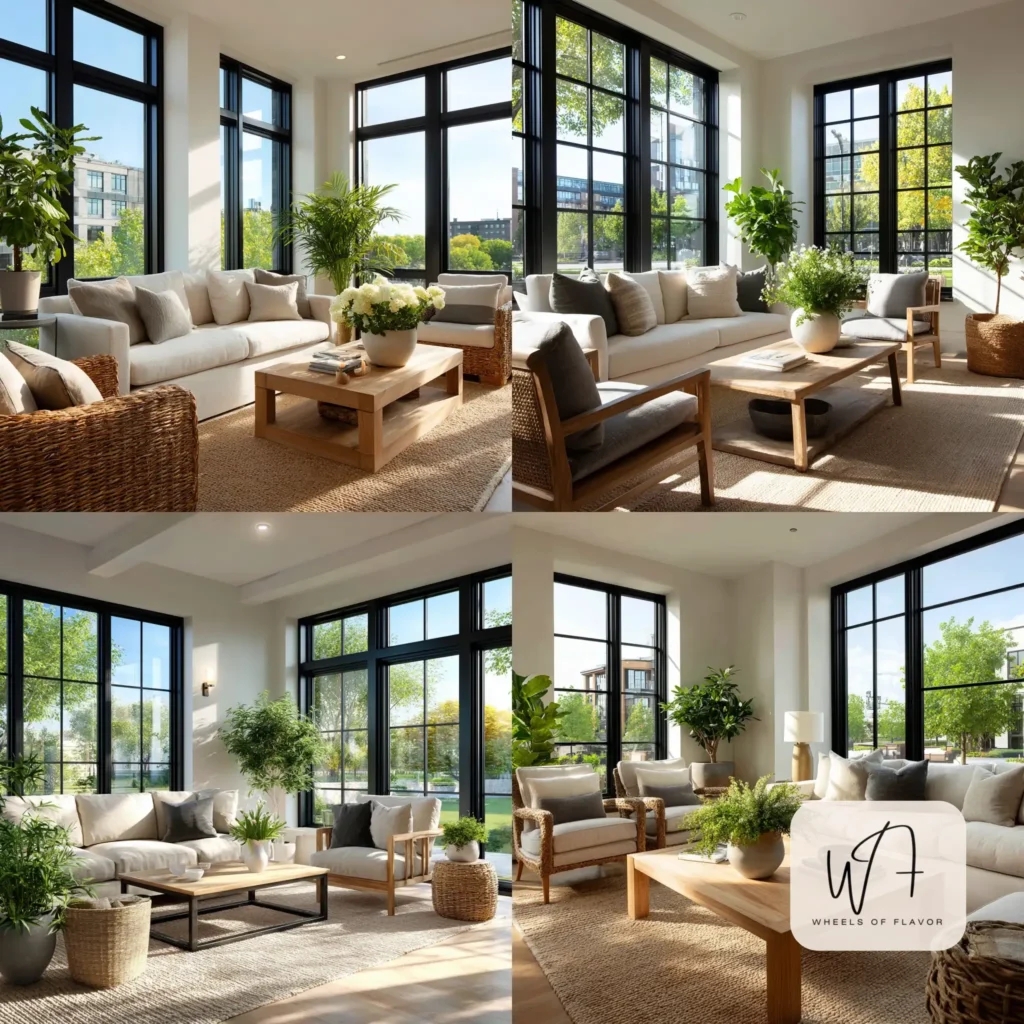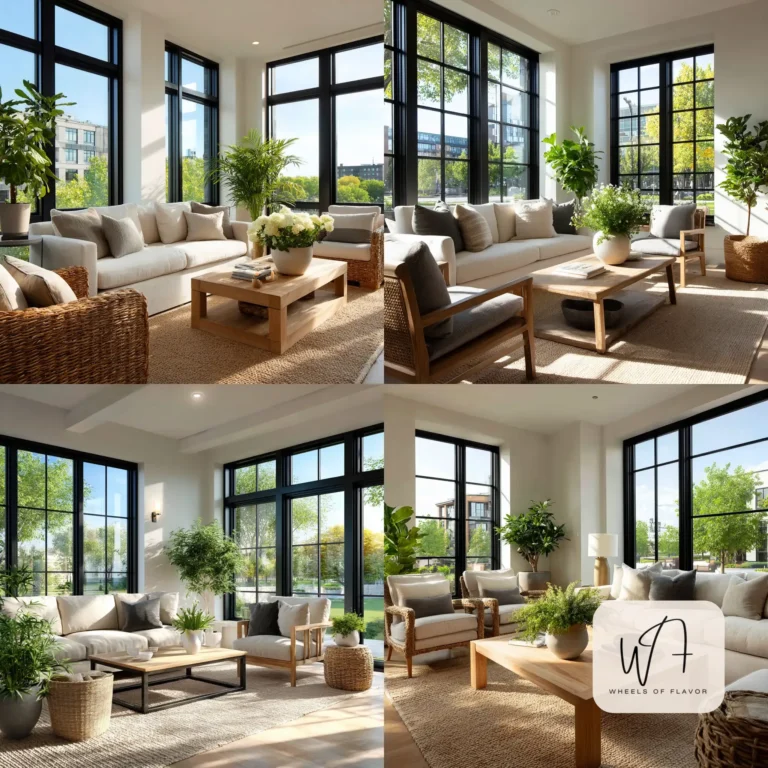A contrast trim interior is more than just a design trend—it’s a powerful way to add sophistication, personality, and depth to any living space. By incorporating contrasting colors or materials along edges, seams, or borders, this design technique creates visual interest and elevates the aesthetic of your home. Whether you’re aiming for a modern, classic, or eclectic vibe, contrast trim interior can transform your space with striking elegance. In this article, we’ll explore nine stunning ways to use contrast trim interior to enhance your home décor, along with practical tips to make it work for you.
Table of Contents
What Is a Contrast Trim Interior?
A contrast trim interior refers to the use of contrasting colors, textures, or materials to highlight architectural features, furniture, or décor elements. Think of crisp white trim against a navy wall, bold black piping on a cream sofa, or metallic accents framing a cozy armchair. This technique draws attention to specific details, creating a polished and intentional look. It’s versatile enough to suit any style, from minimalist to maximalist, and works in every room of the house.
Why Choose a Contrast Trim Interior?
The beauty of a contrast trim interior lies in its ability to make a space feel both cohesive and dynamic. Here are a few reasons why this design choice is gaining popularity:
- Visual Impact: Contrast trim creates focal points that draw the eye, making your space feel more engaging.
- Versatility: It works with any color palette, from soft neutrals to vibrant hues.
- Timeless Appeal: Unlike fleeting trends, contrast trim interior adds a classic touch that endures.
- Customization: You can tailor the trim to suit your style, whether subtle or bold.
For more inspiration on incorporating bold design elements, check out our Styles and Trends section for the latest home décor ideas.
9 Stunning Ways to Incorporate Contrast Trim Interior
1. Accentuate Walls with Bold Trim
One of the easiest ways to introduce a contrast trim interior is by adding trim to your walls. Paint baseboards, crown molding, or window frames in a color that contrasts with your walls. For example, pair soft gray walls with crisp white trim for a clean, modern look, or go bold with black trim against a pastel backdrop for drama.
Pro Tip: Use matte paint for walls and semi-gloss for trim to enhance the contrast and add a subtle sheen.
2. Highlight Furniture with Piping
Contrast trim interior isn’t limited to walls—it shines on furniture too. Upholstered pieces like sofas, chairs, or headboards with contrasting piping can elevate their elegance. A cream-colored sofa with navy blue piping or a velvet armchair with gold trim adds a luxurious touch.
For more furniture styling ideas, explore this insightful guide from Houzz, a leading authority in home design.
3. Frame Windows for Drama
Windows are a natural focal point, and a contrast trim interior can make them stand out even more. Paint window frames in a bold color, like black or charcoal, against neutral walls to create a striking frame-like effect. This technique works especially well in rooms with large windows or high ceilings.

4. Add Contrast Trim to Curtains
Curtains with contrast trim interior can transform a room’s vibe. Choose curtains with a contrasting border or edge, such as white curtains with black trim or beige curtains with gold piping. This subtle detail adds sophistication without overwhelming the space.
5. Create Statement Ceilings
Ceilings are often overlooked, but a contrast trim interior can turn them into a showstopper. Paint ceiling beams or crown molding in a contrasting color to draw the eye upward. For example, a white ceiling with dark wood beams or navy trim creates a bold, architectural statement.
6. Enhance Doorways with Contrast
Doorways offer another opportunity to incorporate a contrast trim interior. Paint door frames in a color that pops against your walls, such as black against white or teal against gray. This technique adds character and defines transitions between rooms.
7. Use Contrast Trim in Kitchens
Kitchens are perfect for experimenting with contrast trim interior. Consider cabinetry with contrasting edges, like white cabinets with black handles or wood cabinets with brass trim. You can also add contrast through backsplash tiles with bold grout lines or countertops with contrasting edges.
8. Elevate Bathrooms with Tiled Trim
In bathrooms, a contrast trim interior can create a spa-like ambiance. Use contrasting grout with subway tiles or add a border of darker tiles around a neutral tile wall. For example, white tiles with black grout or marble tiles with gold accents can make your bathroom feel luxurious.
9. Incorporate Contrast Trim in Accessories
Don’t overlook smaller details! Accessories like throw pillows, rugs, or lampshades with contrast trim interior can tie a room together. A neutral pillow with bold red piping or a rug with a contrasting border adds subtle pops of style.
Tips for Perfecting Your Contrast Trim Interior
- Balance is Key: Avoid overusing contrast trim to prevent a cluttered look. Choose one or two focal points per room.
- Consider Your Palette: Stick to complementary or analogous colors for a harmonious effect.
- Test Before Committing: Use paint samples or fabric swatches to ensure your contrast trim interior works with your space.
- Mix Textures: Combine materials like wood, metal, or fabric for added depth.
For more tips on creating a cohesive look, browse our Styles and Trends category for expert advice.
FAQs About Contrast Trim Interior
What is a contrast trim interior?
A contrast trim interior involves using contrasting colors or materials to highlight edges, seams, or borders in a room, such as trim on walls, furniture, or accessories.
How do I choose the right colors for a contrast trim interior?
Select colors that complement your existing palette. Neutrals like white, black, or gray are versatile, while bold hues like navy or gold add drama. Test samples to ensure harmony.
Can a contrast trim interior work in small spaces?
Yes! In small spaces, use subtle contrasts, like white trim on light gray walls, to add depth without overwhelming the room.
Is contrast trim interior expensive to implement?
Not necessarily. Painting trim or adding piping to existing furniture is budget-friendly. For larger projects, like tiling or upholstery, costs vary based on materials.
Where can I find inspiration for contrast trim interior designs?
Explore design blogs like Houzz or our Styles and Trends section for ideas tailored to your style.
By incorporating a contrast trim interior, you can transform your home into a stylish, inviting space that reflects your personality. Whether you start with a bold wall trim or subtle furniture piping, this design technique offers endless possibilities. Ready to elevate your décor? Start experimenting with contrast trim interior today!

